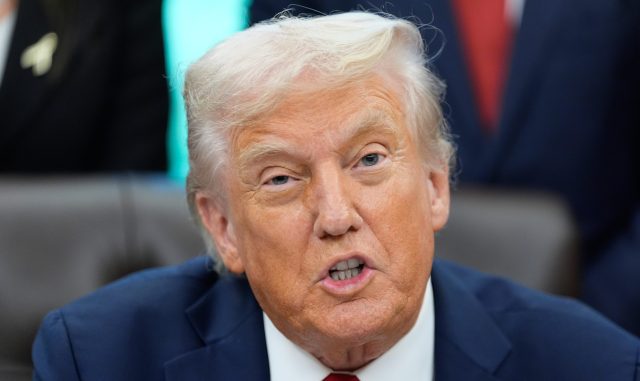
Speaking in London (UK) on September 18, US President Donald Trump said that the US is “trying to get [Bagram airbase] back” from the Taliban, who “…need things from us.” He also said it’s “one of the biggest air bases in the world” and “an hour away from where China makes its nuclear weapons,” and later added that “bad things are going to happen” if the US doesn’t get Bagram.
So, why does the US want Bagram? The answer lies in the strategic posture of China’s People Liberation Army, and Bagram’s geographical location.
A good look at the PLA’s force orientation reveals that for the last two decades, most of it has been deployed towards the South and East China Seas, and the army doesn’t have many forces deployed under its Western Theatre Command opposite India and Central Asia. Given the current postures of the US military and China’s PLA in the Asia-Pacific, most US studies are informed by the premise that the US will suffer unacceptable losses because the modernised PLA, with numbers and China’s “home theatre” advantage, could destroy all US bases in the Republic of Korea, Japan and Guam at the start of any major US-China war, and constrain the US military to operate from faraway bases.
To overcome that dynamic, the US is re-looking at how it broke up the USSR without waging war – by forcing the latter to over-stretch and outspend itself. To repeat that with China, the US needs to posture a credible conventional forces threat (particularly air power and special forces) to China’s western provinces, Xinjiang and Tibet, both of which are restive regions. Any such credible threat could compel China to either divert forces from its east and south towards its west, or force it to raise more forces, which in turn, will not only take time but inflict a financial cost.
The US can posture such a credible military threat by either developing the same from bases in the Central Asian Republics (largely under Russian and/or Chinese influence), from bases in Pakistan (the only country in South Asia which has provided military bases to the US against the Soviets and during the “war on terror” but unlikely to fully support any US venture aimed at China), or by converting Bagram into a forward operating base (FOB).
Situated north of Kabul in Parwan province, Bagram can place US air power closer to western China than other plausible location in the Gulf. It’s also a potential base for any US military operations against Iran. With recent events, particularly the Israeli attack on Qatar, raising doubts on the US security guarantees to the Gulf nations, there are chances that the lavish access the US military has there will be restricted. Besides, the US’ biggest air hub at Al Udeid (Qatar) is over 2,000 kilometres from the Afghan-Chinese frontier. Thus, Al Udeid is to work as a logistics hub and Bagram as an FOB.
This need for Bagram is not new. Way back in April 2007, Admiral William Fallon, former Commander-in-Chief CENTCOM, had in testimony to the House Appropriations Committee, outlined long-term US plans for Afghanistan: “Bagram air base is the centre-piece of US CENTCOM Master Plan for future access to and operations in Central Asia.” During the US withdrawal from Afghanistan (2021), then-Rep Mike Waltz (later Trump’s NSA from January to May 2025) had argued that giving up Bagram was a mistake because “we will no longer have a US airfield in a country that borders China” which could be useful for covertly inciting Uyghur resistance in Xinjiang or threaten China with a second front. In July 2024, Trump stated, “I like [Bagram] not because of Afghanistan…because of China.”
Foreign Minister Amir Khan Muttaqi has responded saying, “Even if the US recognised the Taliban and pledged to rebuild all of Afghanistan, we would never give up a single inch of our country for their military presence.” The US likely gave a very generous offer, but the Taliban regime views US military presence at Bagram as a re-invasion of Afghanistan.
While the US has a history of transacting “impossible alliances”, turning former foes into friends is not easy. It took 20 years after the Vietnam War for the US to be let back in, and it was business and diplomacy which facilitated that entry, not US military presence. As former US Defence Secretary Robert Gates has argued, the greatest victory of the 20th century, against the USSR, relied not on military might but on subtler tools of power.
Although a strong military must underpin every other instrument of US power, its long competition ahead with China is also in the non-military arena. Yet, the tools for the latter, particularly diplomacy, economic power and free trade have withered in the US State Department.
The writer, a retired Army officer, was the principal director in the National Security Council Secretariat